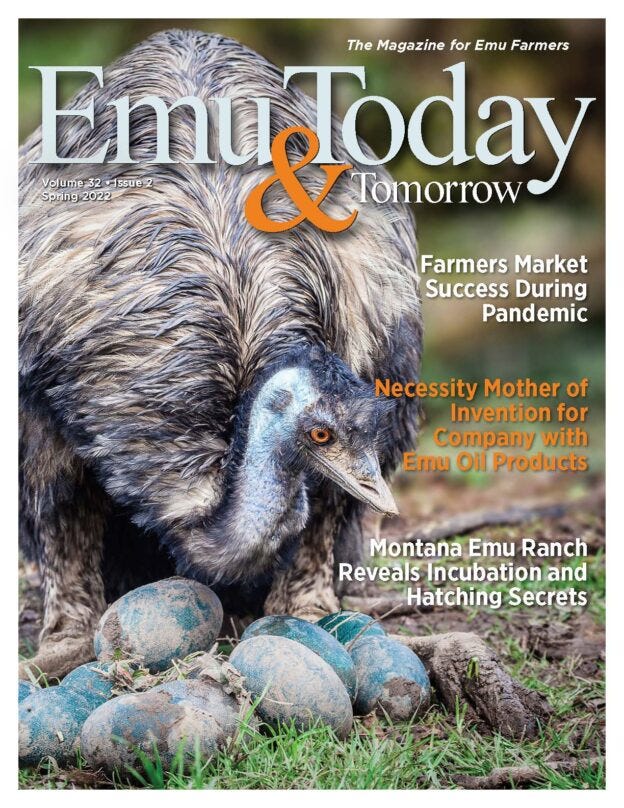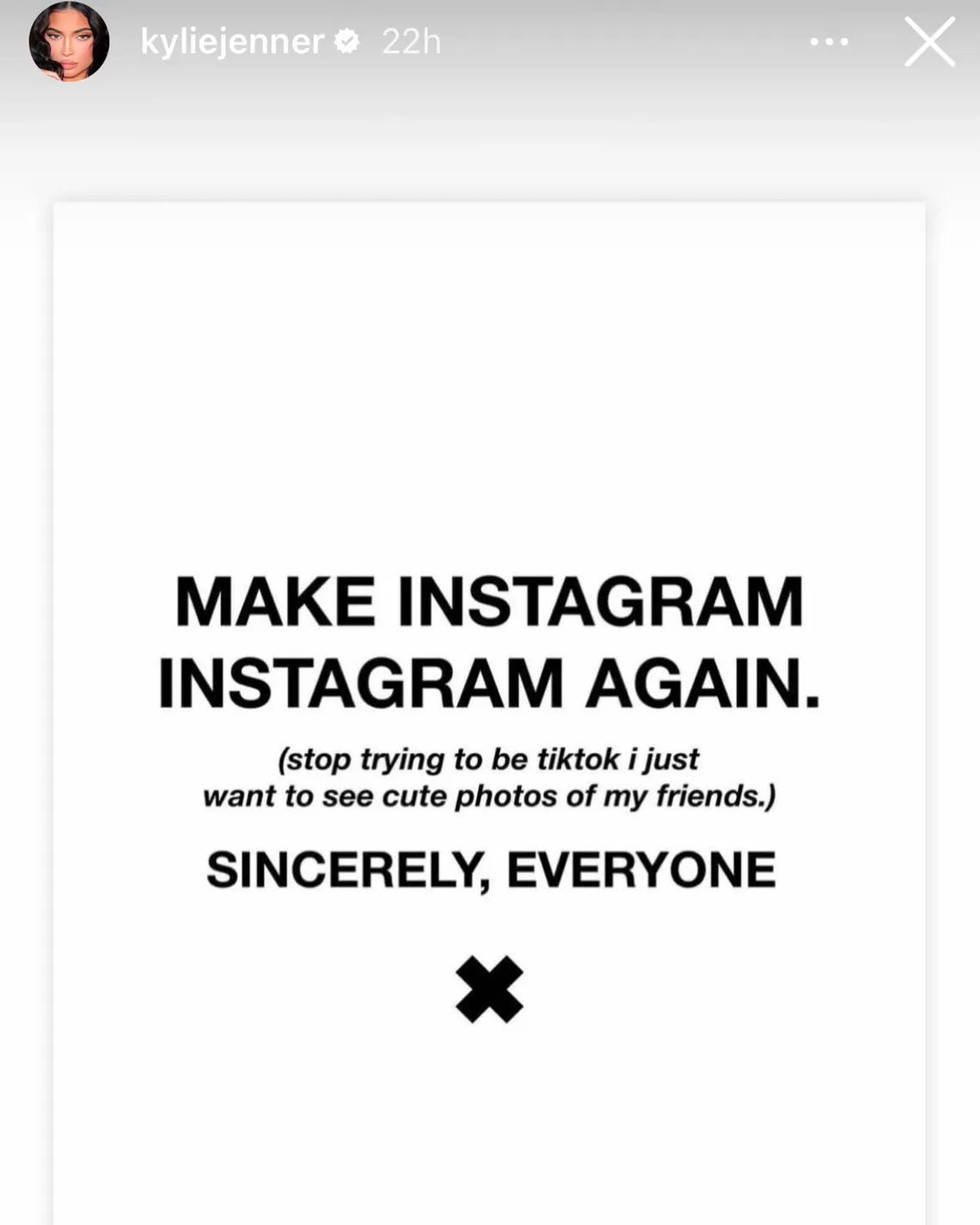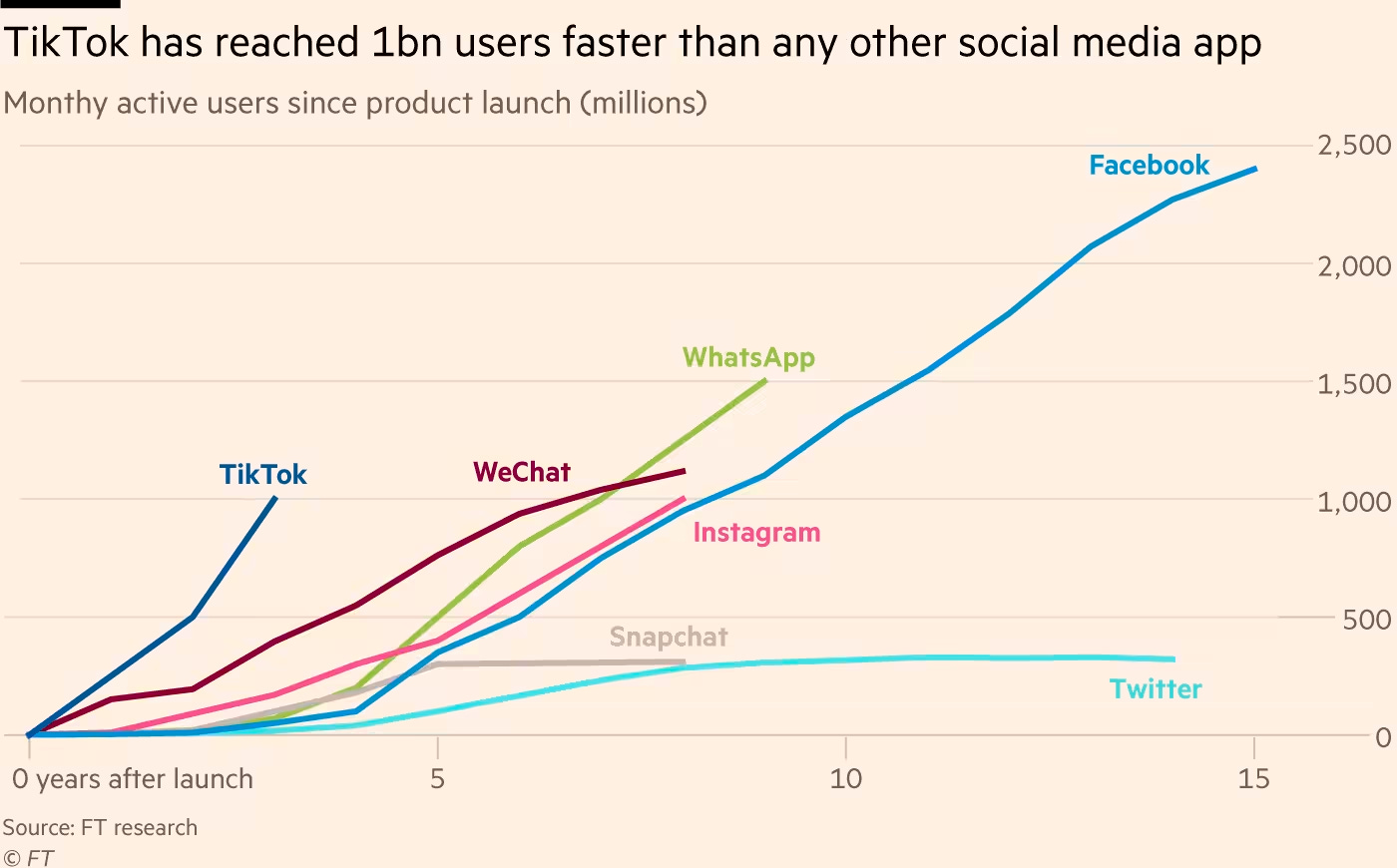Hi 👋 - TikTok’s meteoric rise is forcing other social media platforms to respond. As a result, social media is getting less social. This week, a look at recommendation media and Meta’s response to TikTok. Thanks for reading.
📱If you’re finding this content valuable, consider sharing it with friends or coworkers.
📱 For more like this once a week, consider subscribing.
Cigars, Emus, and Porta Potties
Social media is becoming less social. TikTok popularized algorithmic content distribution. Now other social media platforms are scrambling to respond.
With traditional media, targeting is more of a sledge hammer than a scalpel. For example, magazines play to specific interests – cigar aficionados, emu farmers, portable restroom operators – and advertisers looking to market cigar cutters, porta johns, or emu feed tag along. Here, advertisers operate on inference: lots of guys watch football; lots of guys like beer and pickup trucks; ergo, football games have ads for Bud Light and Ford F-150s.

The internet provided a more refined – though still imperfect – targeting toolkit. Eliminating geographic constraints enabled new connections and deep niches to thrive online. Interests could be parsed thinner and thinner. As Kevin Kelly notes in 1,000 True Fans:
If you lived in any of the two million small towns on Earth you might be the only one in your town to crave death metal music, or get turned on by whispering, or want a left-handed fishing reel. Before the web you’d never be able to satisfy that desire. You’d be alone in your fascination. But now satisfaction is only one click away…As far as I can tell there is nothing — no product, no idea, no desire — without a fan base on the internet.
Additionally, search provides more signal around intent. Emu feed providers surmised that subscribers to Emu Today & Tomorrow were interested in emu feed. The Google search bar eliminates the guesswork.
Like search, social media expanded the targeting toolkit for advertisers and content creators. Historically, Meta – the company formerly known as Facebook – Twitter and other social media platforms relied on social graphs to signal interest. A social graph maps the connections between everyone in a network and their interactions. On Facebook, the social graph is your friends, your friend’s friends, the groups you’re a member of, the content you engage with, and a whole lot more.

This design choice was constrained by the technical limitations of the time, as Mark Zuckerberg noted on Meta’s Q2 2022 earnings call1:
If you go back 10 years ago, the AI to basically figure out what types of things you were interested in other than having a signal of what you directly follow didn't really exist. It wasn't good enough. So, who you followed or who you're friends with was this sort of amazing signal. And it was more unique in a way, whereas now increasingly, AI is able to identify things that you're interested in that might be from accounts that you're not following or might even be whole topics that you're not following anyone in that topic. And that just unlocks a bigger corpus of content that you're going to be interested in.
In 2004 the social graph was the best proxy for interest so it became the basis for distributing content: pictures of your friends and their cat. Meta’s content distribution has evolved since from chronological order to engagement-based, but connected content from user’s social networks remains paramount.
Recommendation Media
But the social graph is only one way to skin the cat. TikTok’s insight is that your friend and their cat, bless them, don’t always produce the best content. Instead of relying on a social graph, TikTok’s high-octane discovery engine serves up whatever it thinks you’ll like, regardless of any social connection (unconnected content).
TikTok’s algorithmic content distribution is an example of what Michael Mignano, co-founder of podcasting platform Anchor and former Head of Talk Audio at Spotify, calls recommendation media. Mignano argues that recommendation media is becoming the new standard for online content distribution.
In contrast to social media, where content is primarily distributed through networks of connected people, there’s less emphasis on friends and social connections (the social graph) with recommendation media. Instead, an algorithm serves up tailored content, largely from outside a user’s social network, based on their unique tastes. Recommendation media shifts the axis of competition from audience size and popularity to content quality and entertainment value. As TikTok has shown, it also obviates the need for a social network to build a massive user base. Lastly, recommendation media removes guaranteed distribution. Whereas distribution is assured to your followers in social media, it is controlled by the algorithmic gods in recommendation media. (This is a boon for upstart creators, but a threat to influencers with large followings like the Kardashians.)

Mignano’s critique is that social media is not effective at matching high-notch content with relevant audiences and that recommendation media improves upon this due to a deeper content pool (all the content versus just content from your social network) combined with powerful recommendation engines2:
In recommendation media, the algorithms that power distribution reign supreme. These algorithms, which are powered by machine learning, are unique, valuable, and grow in power and accuracy as a platform scales. Therefore, only the biggest and most powerful platforms can afford investments in the best machine learning algorithms because they are such expensive and resource intensive assets. In recommendation media, the platform with the best machine learning wins.

Keeping It Reels
TikTok’s meteoric rise and Meta’s response suggest that Mignano is on to something.

Nothing focuses the mind like the risk of hemorrhaging users to a competitor. Historically, Meta embraced an entity-centric approach to discovery. The lion's share of content was connected, coming from friends, groups, and other social connections. When unconnected content surfaced, it was typically re-shares from a user's social network. Unconnected content wasn’t a core part of the Feed experience. To the extent it occurred, it was a sideshow, exiled to search queries and surfaces like Facebook Watch. This is changing. Over the past two years, Meta has been turning the battleship to incorporate short-form video and algorithmically-recommended unconnected content across its properties. Building a better discovery engine and driving Reels adoption are two of Meta’s top investment priorities3.
Reels, Meta’s short-form video feature, launched on Instagram in August 2020 and on Facebook in September 2021. In the first quarter of 2022, Reels accounted for 20% of time spent on Instagram. This metric grew 30% sequentially in the second quarter across Instagram and Facebook4. Already, 15% of Feed content is from algorithms, and this is expected to double to 30% by the end of 2022. Meta controls the dials for ramping up new features (potential limiting factors are content library and recommendation engine quality). The company has a history of driving adoption and monetizing new formats like the transition from desktop to mobile and the introduction of Stories. However, the stakes are higher today. TikTok is Meta’s most significant competitor, and it’s growing quickly at a time when Meta’s growth has stalled. Meta is trading-off lower monetization today (Reels content is displacing higher-monetizing surfaces) to boost engagement and retention. The hope is that more interesting content drives higher engagement, time spent, and ultimately ad revenue. If Meta can keep users engaged (and off TikTok), monetization should follow.
The (Expensive) Little Engine That Could
Building a better discovery engine will be a critical determinant of Meta’s success. It needs to build a discovery engine capable of going toe-to-toe with TikTok. A leaked internal memo on product strategy, Tom Alison, Head of Facebook acknowledged that5:
The quality and caliber of our recommendations technology will be a limiting factor in how successful we are, so the updated priorities emphasize our need to invest and focus there.
While TikTok is narrowly focused on short-form video, Meta aspires to build a recommendation engine capable of spanning multiple content types, including comments, links, pictures, short-form video, and text. Zuckerberg sees this as a key differentiator, but it’s so far unproven6. Over time, the prevalence of unconnected content will meaningfully increase on Meta, though the company twists itself into pretzels to say that connected content will remain important. Here’s Zuckerberg on Meta’s second quarter earnings call7:
One of the main transformations in our business right now is that social feeds are going from being driven primarily by the people and accounts you follow to increasingly also being driven by AI recommending content that you'll find interesting from across Facebook or Instagram, even if you don't follow those creators. Social content from people you know is going to remain an important part of the experience and some of our most differentiated content, but increasingly we'll also be able to supplement that with other interesting content from across our networks.
That’s a tall order. Building a system that evaluates billions of pieces of content spanning multiple mediums, identifies original creators and trending content, and makes tailored recommendations isn’t easy. Or cheap. Meta spent $7.7 billion on capital expenditures in Q2 2022 and expects to spend $30-$34 billion for the full year8, roughly equivalent to the GDP of Nepal or Zimbabwe9. A large part of this is heavy investments in servers to support AI infrastructure. The ROI from these massive investments is uncertain and will depend on Meta’s ability to retain and grow its user base and reaccelerate revenue growth. It took a few years to get Stories monetization to parity with the Feed, so this is a story that will play out over years.
Goodbye, Network Effect. Hello, Innovator’s Dilemma
TikTok presents Meta with a bastardized version of the innovator’s dilemma. Clayton Christensen would like Meta’s response. By promoting Reels, a lower monetization format, and building a new recommendation engine for unconnected content, Meta is cannibalizing itself to protect its user base, at the expense of its current profit pool. Execution, as always, is the hard part. Good strategy doesn’t necessitate solid execution.
The North Star for content creators and advertisers is providing the right content, to the right audience, at the right time. In 2004, technological limitations meant that the social graph was the best way to do this. Today’s technological landscape is very different. Entertainers and advertisers want audience attention, but this doesn’t require a social graph. TikTok sidestepped Facebook’s moat, using its algorithm to distill interests and aggregate audiences without a social graph. Mignano expects the winners of the recommendation media age to be the companies with the best machine learning algorithms. Meta is spending tens of billions of dollars to see if it can dig a new moat.
📱If you’re finding this content valuable, consider sharing it with friends or coworkers.
📱 For more like this once a week, consider subscribing.
More Good Reads and Listens
Michael Mignano, co-founder of podcasting platform Anchor and former Head of Talk Audio at Spotify, on the rise of recommendation media. The Verge on why Facebook is redesigning to become more like TikTok. The New Yorker on TikTok and the fall of the social-media giants. Below the Line on Clubhouse, the dangers of early hype, and speed to copy in social media.
Disclosure: The author owns shares in Meta.

Meta Platforms, Q2 2022 Earnings Call, July 27, 2022.
Michael Mignano for Every, The End of Social Media and the Rise of Recommendation Media, July 30, 2022.
The other two are building ads infrastructure for the post-ATT world and the Metaverse.
Meta Platforms, Q2 2022 Earnings Call, July 27, 2022.
Meta Platform, Building the Discovery Engine, April 27, 2022. Note: This is an internal memo published by Tom Alison, the head of Facebook and shared by The Verge.
Meta Platforms, Q2 2022 Earnings Call, July 27, 2022.
Meta Platforms, Q2 2022 Earnings Call, July 27, 2022.
Meta Platforms, Q2 2022 Earnings Call, July 27, 2022.
Wikipedia contributors, "List of countries by GDP (nominal)," Wikipedia, The Free Encyclopedia, https://en.wikipedia.org/w/index.php?title=List_of_countries_by_GDP_(nominal)&oldid=1104693100 (accessed August 19, 2022).


